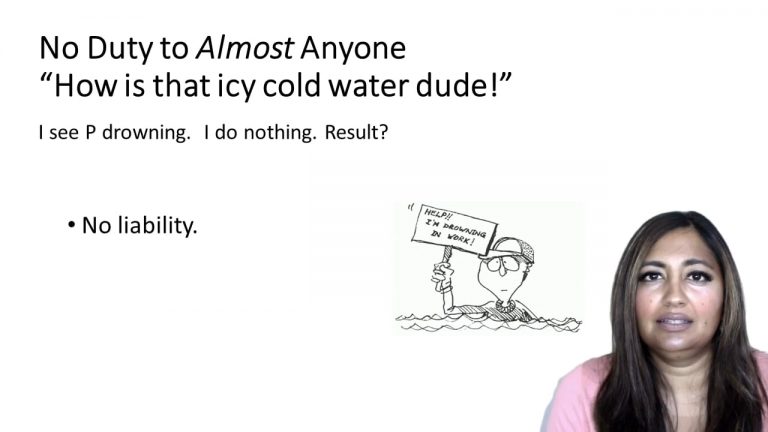SmartBrief
Confirm favorite deletion?
Torts Keyed to Christie
Mullin v. Municipal City of South Bend
Citation:
639 N.E.2d 278 (1994)Facts
The City of South Bend (Defendant) had a policy limiting the circumstances when an ambulance would be sent to a fire but required ambulances at fires where the building was thought to be occupied. A fire was reported to an emergency dispatcher at Jerri Mullin’s (Plaintiff) home at 5:27 a.m., with a warning that someone was likely inside the home. The fire trucks were dispatched first and then called an ambulance, which arrived at 5:44 a.m. The Plaintiff’s son died, and her daughter was injured. The Plaintiff sued the Defendant for negligence, arguing that the Defendant was not immune from the lawsuit and that it had a duty to send an ambulance to her home as soon as they knew or reasonably knew that her house was on fire, and someone was home. The defendant moved for summary judgment.
Only StudyBuddy Pro offers the complete Case Brief Anatomy*
Access the most important case brief elements for optimal case understanding.
*Case Brief Anatomy includes: Brief Prologue, Complete Case Brief, Brief Epilogue
- The Brief Prologue provides necessary case brief introductory information and includes:
Topic:
Identifies the topic of law and where this case fits within your course outline.Parties:
Identifies the cast of characters involved in the case.Procedural Posture & History:
Shares the case history with how lower courts have ruled on the matter.Case Key Terms, Acts, Doctrines, etc.:
A case specific Legal Term Dictionary.Case Doctrines, Acts, Statutes, Amendments and Treatises:
Identifies and Defines Legal Authority used in this case.
- The Case Brief is the complete case summarized and authored in the traditional Law School I.R.A.C. format. The Pro case brief includes:
Brief Facts:
A Synopsis of the Facts of the case.Rule of Law:
Identifies the Legal Principle the Court used in deciding the case.Facts:
What are the factual circumstances that gave rise to the civil or criminal case? What is the relationship of the Parties that are involved in the case.Issue(s):
Lists the Questions of Law that are raised by the Facts of the case.Holding:
Shares the Court's answer to the legal questions raised in the issue.Concurring / Dissenting Opinions:
Includes valuable concurring or dissenting opinions and their key points.Reasoning and Analysis:
Identifies the chain of argument(s) which led the judges to rule as they did.
- The Brief Prologue closes the case brief with important forward-looking discussion and includes:
Policy:
Identifies the Policy if any that has been established by the case.Court Direction:
Shares where the Court went from here for this case.

 17m 8s
17m 8s